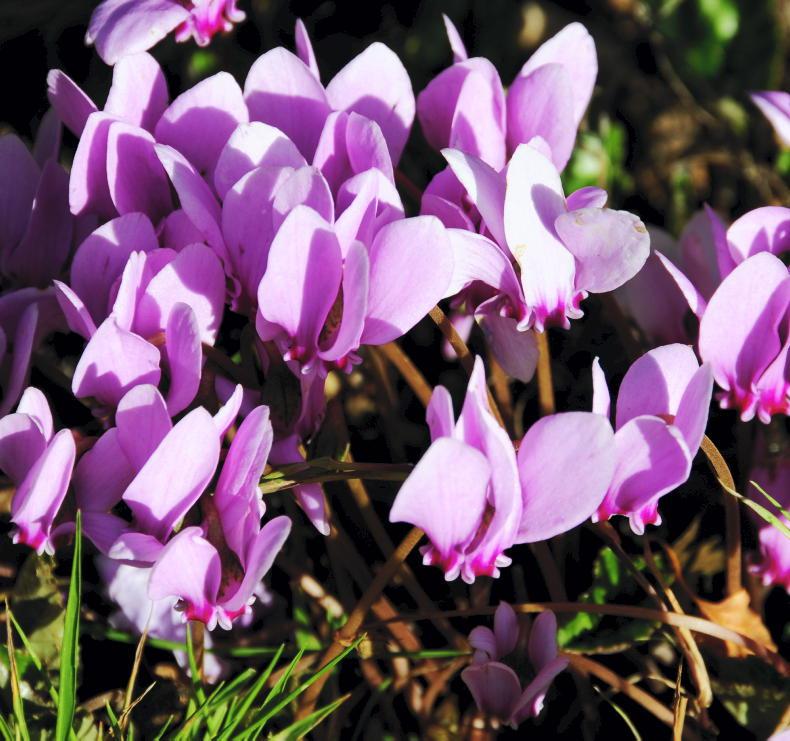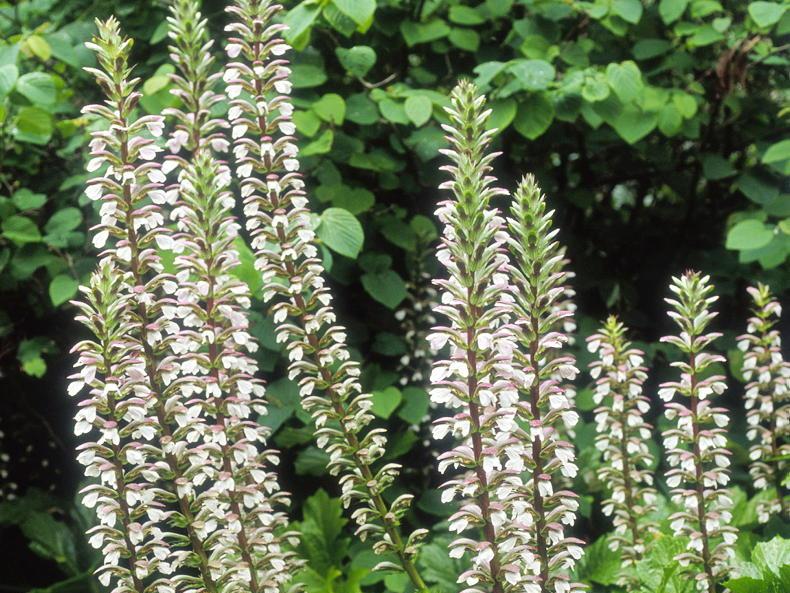Name: Acanthus, the common name, bear’s breeches, is not very flattering but at least it has the merit of being easy to remember. The leaves are large, and often spiny, presumably not a concern for a bear’s thick hide.
Family: Acanthus is linked to Scrophulariacteae, the figworts, with its own family Acanthaceae and related to foxglove, buddleja, diascia and Cape figwort. It has long had a dignified usage. A formalized pattern based on the acanthus foliage, and sometimes the flower stem, has been used as a motif in the carvings at the top of classical columns since ancient Greece and Rome. The leaf was considered to be a symbol of immortality.
Garden use
Certainly, the plant itself appears to be immortal. It is very tenacious in any piece of ground where it becomes established. Even when the plant is dug out, it readily re-establishes from pieces of root left behind. It is native to dry rocky hillsides and can tolerate very dry and hot conditions. There are several species, ranging across the Mediterranean region and south-eastern Europe. Some kinds are very spiny while others have few or no spines. The two main kinds are Acanthus spinosus, which is spiny, and the soft-leaved Acanthus mollis. There is a cultivar called ‘Whitewater’ which is liberally splashed with creamy white to such a degree that it can look ill.
The spiny kind is grown for its much-divided and spiny leaves. While it is spiny, the spines are not particularly vicious or dangerous. The soft acanthus has broader, less-divided leaves and few, if any, spines. This plant is not as dramatic but makes a very fine display of well-shaped leaves. Both are semi-evergreen if conditions are suitable.
Garden value
Above the large rosette of handsome leaves, the tall flower spikes are produced in summer. The spiny species flowers in early to mid-summer, the soft species from mid-summer onwards. The flower spikes can be from 90cm to 1.5m tall. They look like foxglove spires but are more robust and last longer in flower.
The flower spike is supported by a strong stem and does not need staking. It is green as it grows and then its hooded purple bracts form. Under the bracts, white flowers appear. The bracts stay in place after the flowers finish and rounded pods form under the bracts. The seed heads can last a long time and, though less colourful than the flowers, provide a strong upright shape. The stems can be dried and used in dried flower decoration.
Acanthus looks great with grasses, the bulk of its dark green foliage and sculptural stems making superb contrast with the lightness of grass. Acanthus can be used as a feature plant in the naturalistic planting style. Previously, it was often grown as a filler with shrubs and can match many kinds of shrubs with sheer bulk, and flowers after the main rush of flowering shrubs has finished for the season. It tolerates light shade but often gets mildew as a result and flowers less, if at all. It prefers a sunny spot in well-drained soil of reasonable fertility. Remember, it can be invasive, and it needs a good deal of space for the large leaves.

Planting autumn cyclamen
The pretty small-sized flowers of hardy cyclamen can flower from mid-August in a damp summer to mid-September following a good summer. By mid-summer, the marbled heart-shaped leaves wither away leaving the large tubers exposed. The tubers can be as big as side plates with rough bark-like skin. These are buried to about 5cm depth in the soil, but with as much showing above ground. When the flowers fall off, the rounded seed capsules form and swell. The flower stems coil like springs and bring the developing capsules back close to the soil. Later, the capsules dry out and the seeds are shed. The seeds germinate readily in the right conditions, that is, fairly dry soil and a sunny spot. Although cyclamen grows in the light shade of trees, more self-sown seedlings develop in a bright place. The flowers are usually of a pale pink colour, shading from pale pink to deep rose-purple at the base of the petals. Choose a spot that suits the plants well because they will last for many decades, and are charming every autumn.
Flowers
The spring bulbs are in the shops and should be planted as soon as possible. There is also better choice when the first bulbs come in. Hanging baskets and other containers can be fed a couple of times more with liquid feed.
Fruit, vegetables and herbs
Fruit crops have been slack due to frost damage in late April and May. Prune raspberries, blackcurrants and gooseberries that have finished fruiting. Remove old vegetable crops and do not allow weeds to go to seed.
Lawns
Continue mowing. This is the ideal time of year to sow a new lawn. There is still a last chance to apply lawn weedkillers, if the weather is warm enough and soil temperature remains high but not on areas of grass grown for wildflowers.
Trees, shrubs and roses
Prepare areas of ground for planting trees and shrubs during the autumn. Prune rambler roses that have finished flowering and they will flower better next year. Check that young trees are securely staked.
Greenhouse and house plants
Tidy up the greenhouse now and do not overwater or splash water about. Continue to train and side-shoot tomatoes and cucumbers. Allow only existing fruit to develop on these. Pot up any cuttings that have rooted well.






 This is a subscriber-only article
This is a subscriber-only article










SHARING OPTIONS: